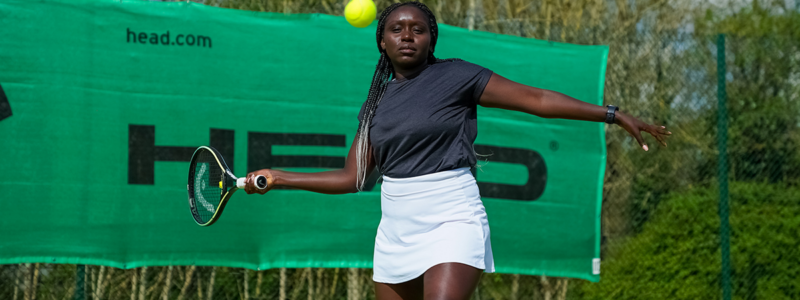The swing of the racquet, the roar of the crowd and the cheers at the call of “game, set, and match”. There’s nothing quite like tennis, but the game’s unique scoring system and distinct terminologies can seem baffling to beginners. Fortunately, this exciting, fast-paced sport is easier to understand than you might think.
This guide provides a basic understanding of the fundamentals of tennis, breaking down each component of a match so you can fully enjoy spectating and maybe even consider playing it yourself. Although there are a number of variations to the game — affecting things like tie-breaks — we’ll stick to the absolute basics. If you’re eager to pick up a racquet and get started right away, our beginner’s guide to playing tennis is waiting for you here.
Tennis by the numbers
Tennis is as much about the numbers as it is about strategy and skill. Don’t worry too much if they don’t sink in immediately; these fundamentals will become second nature before too long.
- Points: To win a game, a player must score at least four points, which are given as 0, 15, 30 and 40 (explained below). Points are reset after each game is won.
- Sets in a match: A match can have up to five sets, but most professional matches are best-of-three, meaning the first player to win two sets wins the match. In Grand Slam tournaments like Wimbledon, men play best-of-five sets while women play best-of-three sets.
- Match duration: There’s no set time limit to a tennis match. On average, a best-of-three match lasts around 90 minutes, but they can extend far beyond that. In fact, the longest recorded professional tennis match lasted more than 11 hours!
Understanding score calling
The modern game of tennis can trace its roots all the way back to a medieval game called jeu de paume, which began in 12th century France. Given its ancient origins, it is perhaps not surprising that tennis has evolved its own language and peculiarities when it comes to score calling.
- Points: In tennis, “0” is called “love”, “1” is “15”, “2” is “30” and “3” is “40”. Why? Nobody knows for sure, but various theories are floating around.
- Deuce: A tie at 40 points (three points each) is known as “deuce”. Ties at other scores are “15 all” or “30 all”.
- Advantage: If a player scores a point from a deuce, they have an “advantage”. If they score the next point, they win the game. However, if the opponent scores, it returns to deuce.
Game, set, match: What does it mean?
The terms “game”, “set” and “match” are integral to tennis, but their meanings may be unclear if you haven’t watched or played the sport before.
- Game: A game is the foundation of a tennis match. The server continues to serve until one player or doubles team has won at least four points with a two-point lead. Once achieved, that player or team wins the game.
- Set: A set consists of multiple games. To win a set, one side must win six games with at least a two-game advantage over the opponent.
- Match: The match encompasses the entire competition. The phrase “game, set and match” is declared when a player or a side wins the required number of sets and, consequently, the match.
Tennis terminology extends beyond this, but these basics will allow you to follow along with any match.
Let’s get started
Understanding the basics of tennis will open the door to enjoying this dynamic sport in a whole new way, whether you’re watching the pros make it look easy or picking up a racquet for the first time.
Still not sure if tennis is for you? Learn more about the many and varied benefits of playing tennis — such as boosting your mental and social well-being — and check out our insightful guides to start developing a comprehensive understanding of the sport:
- A guide to different tennis surfaces
- How to choose the right tennis shoes for you
- Getting in shape for the tennis season
Wherever your journey into tennis takes you, take your first steps (and swings) at David Lloyd Clubs. Tennis is at the heart of our story, and we’re proud to offer an unrivalled racquets experience encompassing extensive facilities, expert coaching and fun classes. Let’s play!
Find a club



